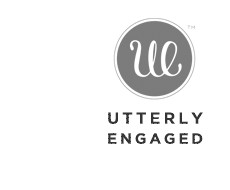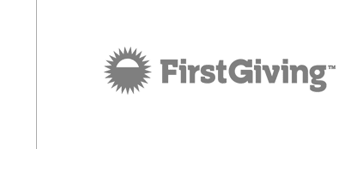Why News Cycles Never Stop AnymoreYou’ve probably noticed that news never seems to pause—it’s everywhere, all the time. Whether you’re checking your phone or flipping through channels, updates constantly interrupt your day. The pace feels relentless, often leaving you unable to catch your breath or separate what truly matters from the noise. Why has the news become an endless stream? The answer isn’t as simple as you might think. The Rise of the 24-Hour News MachineThe advent of the 24-hour news cycle significantly changed the landscape of news consumption. Prior to this shift, individuals relied on daily newspapers and scheduled evening broadcasts for information. With the establishment of continuous news channels, particularly CNN, news became accessible at any hour, emphasizing a need for immediacy and constant updates. The integration of social media has further accelerated this process, allowing users to share and receive news updates in real-time. This shift has altered the focus of news coverage, often prioritizing global events that attract widespread attention over local stories. As a result, news outlets are engaged in intense competition to provide the latest information, leading to an environment characterized by frequent alerts and a steady stream of updates. This continuous demand for content raises questions about the quality and depth of journalism, as outlets may prioritize speed over thoroughness. The emphasis on breaking news can also contribute to a fragmented understanding of events, as narratives are often shaped by the most immediate details rather than comprehensive analysis. How Social Media Fuels Relentless CoverageSocial media facilitates the rapid dissemination of information, which has significant implications for news coverage. Stories often don't fade from public attention but instead evolve through ongoing sharing, commenting, and reactions from users. This leads to a continuous news cycle where platforms promote breaking news with frequent updates. Algorithms contribute to this phenomenon by prioritizing urgent stories, ensuring they remain prevalent in users' feeds. Engagement metrics incentivize news outlets to provide constant updates, resulting in even minor incidents being reported as significant events. Additionally, many news organizations rely on content aggregation, which further amplifies the coverage of certain stories. The demand for immediate reporting can sometimes blur the distinction between objective journalism and opinion, which may contribute to a persistent state of awareness among audiences. This environment reinforces the cycle of news consumption and engagement, highlighting the dynamic interplay between social media and traditional news reporting. The Psychological Toll of Constant InformationThe constant influx of information from various news sources can lead to an increased psychological burden. Research indicates that continuous engagement with the news is linked to heightened levels of stress and anxiety regarding both global events and personal circumstances. Even the presence of positive news can often be overshadowed by a predominance of urgent, negative headlines, which may contribute to a persistent state of worry and emotional exhaustion. Moreover, regular exposure to distressing news can impair cognitive function, making it difficult for individuals to concentrate and maintain a sense of agency. This phenomenon can be attributed to the repetitive nature of negative narratives, which may diminish feelings of hope and resilience over time. Long-term exposure to overwhelming news cycles may lead to desensitization, resulting in emotional numbness or feelings of helplessness. These dynamics underscore the importance of managing news consumption to mitigate its potential adverse effects on mental health. Strategies such as setting specific times for news intake, seeking a balanced perspective by diversifying sources, and prioritizing personal well-being can help individuals navigate the challenges presented by a relentless news environment. Breaking News: From Urgency to OverwhelmAs news organizations strive to report developments as they occur, the distinction between what constitutes urgent news and routine information often diminishes. The proliferation of breaking news alerts can create a sense of crisis, drawing attention to numerous notifications that compete for immediate engagement. This phenomenon can lead individuals to struggle with differentiating between significant events and standard updates. The continuous barrage of information may result in cognitive overload, where individuals feel overwhelmed by the sheer volume of updates they receive. This can manifest as anxiety and a scattered state of mind, complicating the ability to process news effectively. Additionally, platforms like social media tend to exacerbate this urgency, making it challenging for users to disengage and take a break from the influx of information. In response to this overwhelming environment, many individuals may develop coping mechanisms such as tuning out notifications. However, this approach can lead to the risk of overlooking crucial updates amidst the persistent flow of information. The Business Behind Endless ReportingThe persistent cycle of breaking news reflects a systematic approach integral to the business model of contemporary media. News organizations thrive on viewer engagement, as metrics such as clicks and watch time directly correlate with advertising revenue. Consequently, media outlets often emphasize sensational topics—fear, outrage, and controversy—to capture audience attention. The structure of 24-hour news channels creates a pressing need to continuously update coverage, leading to an environment where stories may be reported repetitively or without substantial new developments. Many media outlets intentionally cater to specific ideological perspectives, reinforcing preexisting beliefs and fostering echo chambers among viewers. This model indicates that the phenomenon of incessant reporting isn't merely a reflection of technological advancement but is fundamentally linked to the economics of attention and the pursuit of profitability within the media landscape. Strategies for Regaining Control of Your AttentionStaying informed while managing the overwhelming influx of news updates requires a strategic approach. To minimize stress associated with continuous alerts, consider setting designated times, such as morning and evening, for checking the news. This allows for a more controlled and less disrupted information intake. Implementing media-free periods, particularly before sleep and upon waking, can be beneficial for mental well-being, allowing time for reflection and reducing cognitive overload. Utilizing AI-generated news summaries or trusted news aggregators can facilitate efficient access to concise updates, enabling you to stay informed without sifting through extensive articles. Additionally, turning off non-essential notifications from news apps and social media can help decrease distractions and enhance focus on more pertinent tasks. It is also important to approach news consumption with a critical mindset. Engaging with content objectively, rather than from an emotional standpoint, can promote a more balanced understanding of current events. This method ensures that one remains informed while maintaining a level of mental clarity and composure. ConclusionYou’re living in a world where news never sleeps, and it’s easy to feel trapped by constant updates and alerts. The 24-hour news cycle, fed by social media, keeps you hooked, but it also leaves you anxious and overwhelmed. Remember, you can take back control. Limit your exposure, question the urgency, and choose when and how you engage. By setting boundaries, you’ll reclaim your attention and find balance in an otherwise endless stream of information. |
|
Copyright © 2011 DL/sh Design. Utterly Engaged. Ever Ours. All Rights Reserved. |













